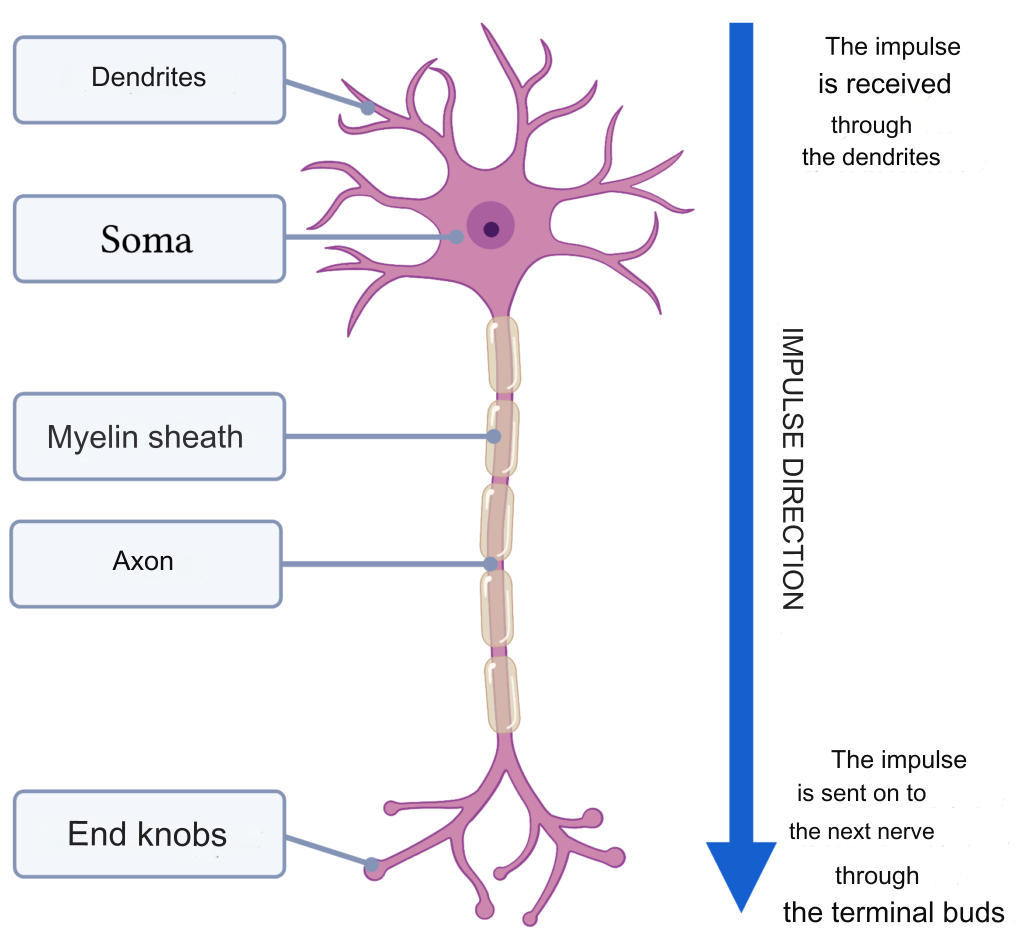The human brain contains about 86 billion nerve cells. Nerve cells have the task of sending signals between each other to carry information throughout the body.
A nerve cell is a cell, and it is also called a neuron or simply a nerve. Nerve cells have a rather special shape compared to the rest of the body’s cells. They are elongated and consist of a body and a tail. The body is called soma, and it has long branches, which are called dendrites. From the soma emanates the tail, which is called an axon. The axon is surrounded by a myelin sheath, which is a layer of fat. This isolates the axon and makes sure that the electrical signal travels quickly along the nerve cell. At the end of the axon there are end buds, where the transmission of the signal to the next nerve cell occurs.
When nerve cells communicate with each other, they use electrical signals. The signal that goes from one nerve cell to another nerve cell is called an impulse. A nerve cell receives the impulse through the dendrites and sends it further along the axon. At the end buds, the impulse is passed on to the next nerve cell. This is how nerve cells constantly send information in the form of impulses around the body. In figure 1 you can see the structure and direction of a nerve cell.


